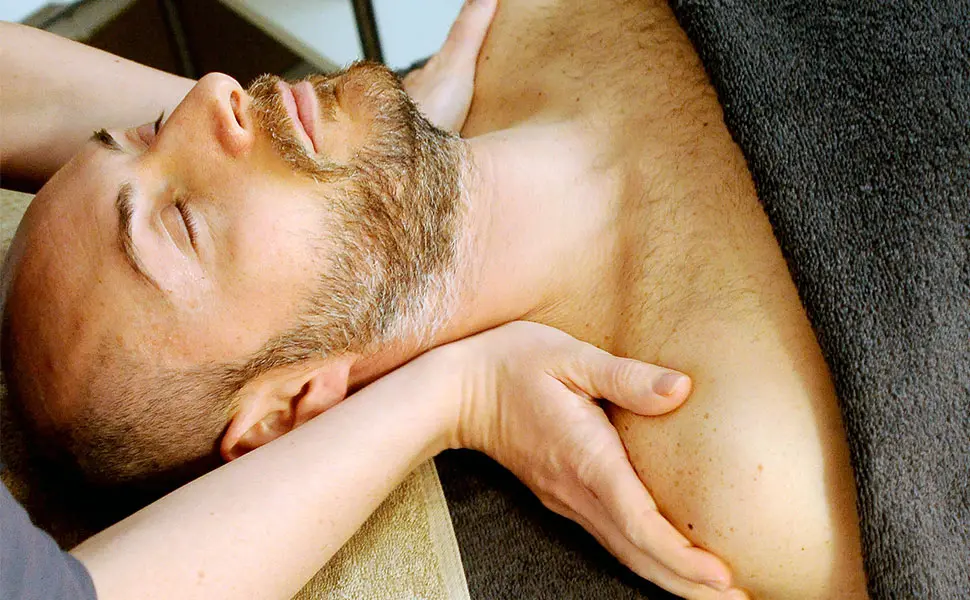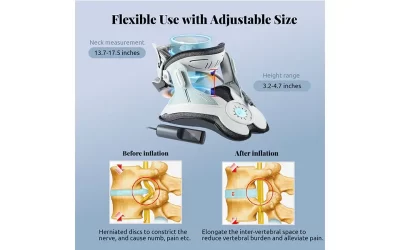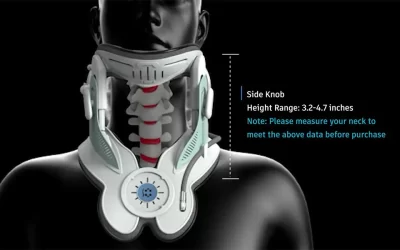Welcome to our guide on manual cervical traction! If you have been experiencing neck pain, stiffness, or limited range of motion, you may find it a helpful treatment option. This non-invasive technique involves gentle stretching of the neck to alleviate pressure and tension in the cervical spine. In this article, we will explore when and how to perform manual cervical traction effectively and safely. We’ll provide you with the knowledge and tools necessary for a successful therapy session.
What is Manual cervical traction?
Manual cervical traction is a therapeutic technique used to relieve neck pain and improve mobility in the cervical spine. It involves applying gentle, controlled force to the neck in order to stretch and decompress the vertebrae and surrounding soft tissues. This can help alleviate pressure on the nerves, reduce muscle tension, and promote proper alignment of the cervical spine.

image resources: Unsplash
During manual cervical traction, a healthcare professional or therapist will typically use their hands to apply traction to the neck. They may gently pull on your head or use specific techniques to target different areas of the cervical spine. The amount of force applied will vary depending on your individual needs and tolerance.
Manual cervical traction can be an effective treatment option for conditions such as herniated discs, whiplash injuries, and degenerative disc disease. However, it is important to consult with a healthcare professional before attempting manual cervical traction on your own, as an incorrect technique or excessive force could potentially worsen your condition.
Benefits of manual cervical traction
What are the benefits of manual cervical traction? It is a way to help your neck feel better. It uses gentle pulling to help take pressure off the bones and nerves in your neck. This can help if you have a condition like a herniated disc or nerve impingement. It can also help improve your range of motion.
Manual cervical traction also helps improve blood flow to your neck. This can help your neck heal by bringing nutrients and oxygen to the injured tissues. It can also help reduce inflammation and swelling, which can cause neck pain.
Manual cervical traction is a non-invasive and drug-free way to treat neck pain. However, it is important to have it done by a trained healthcare professional. They can make sure that the force is applied correctly and that you don’t have any bad reactions.
To list them out, here they are:
- Relieves pressure on the spinal discs and nerves in the neck region.
- Improves flexibility and range of motion in the neck.
- Improves blood circulation in the neck area.
- Promotes healing of injured tissues.
- Reduces inflammation and swelling.
Video Guides for Manual Cervical Traction
This video is from Dr. Jon Saunders for decompressing the neck at home in 4 different ways:
There is a video by Paul from OrthoEval Pal demonstrating manual cervical traction. He explains how to position the patient, how to apply the traction, and what to look for during and after the procedure.
The video begins with Paul explaining the importance of patient positioning. He recommends placing a roll under the patient’s legs to help them relax. He also emphasizes the importance of good body mechanics for the therapist, as they will be applying a significant amount of force.
Paul then demonstrates two different hand techniques for applying manual cervical traction. He starts by placing his hands on the patient’s suboccipital ridge, which is the area at the base of the skull. He then applies a gentle pulling force, while flexing the patient’s neck slightly.
Paul also demonstrates a technique where he uses a belt to help him apply the traction. He places the belt around the back of his hands and then pulls on the belt to apply the traction.
Paul teaches us 2 important things:
- How to monitor the patient during and after the procedure, and
- How to gradually increase the amount of traction as the patient’s condition improves.
How to Do Manual Cervical Traction
Here are the steps on how to do manual cervical traction at home:
- Lie on your back on a flat surface.
- Place a rolled towel under your neck to support it.
- Place your hands on the back of your head and gently pull your head back.
- Hold the position for 30 seconds.
- Repeat 2-3 times.
It is important to start with a gentle force and gradually increase the force as you get more comfortable. You should also stop if you experience any pain.
Timing Reminds
There are a few different situations where cervical neck traction may be beneficial. These include:
- Neck pain: Cervical neck traction can be used to relieve pain caused by conditions such as whiplash, herniated discs, and arthritis.
- Headaches: Cervical neck traction can also be used to relieve headaches caused by tension in the neck muscles.
- Numbness and tingling: Cervical neck traction can help to relieve numbness and tingling in the arms and hands caused by pinched nerves in the neck.
We can do neck traction in a variety of settings, including a doctor’s office, a physical therapist’s office, or at home. The amount of traction that is applied will vary depending on the patient’s condition and tolerance.
In general, cervical neck traction is safe and effective for most people. However, there are a few situations where it should not be used. These include:
- Neck instability: Cervical neck traction should not be used in people with neck instability, as it can further destabilize the spine.
- Recent neck surgery: Cervical neck traction should not be used in people who have recently had neck surgery, as it can irritate the surgical site.
- High blood pressure: Cervical neck traction can sometimes cause a temporary increase in blood pressure. Therefore, it should be used with caution in people with high blood pressure.
If you are considering cervical neck traction, it is important to talk to your doctor or physical therapist to see if it is right for you. They can help you determine the best type of traction for your condition and how much traction you should receive.
Here are some additional factors to consider when deciding when to do cervical neck traction:
- Time of day: You can do cervical neck traction at any time of day. However, some people find that it is more effective in the morning when the muscles are still relaxed.
- Schedule: If you have a busy schedule, you may want to do cervical neck traction at night before bed. This can help you relax and improve your sleep quality.
- Other activities: If you are planning to do other activities after cervical neck traction, such as working out or going for a walk, you may want to wait a few hours after the traction. This will give your neck time to recover.
Overall, cervical neck traction can be a safe and effective way to relieve neck pain and inflammation. However, it is important to talk to your doctor or physical therapist before starting traction to make sure that it is right for you.
Alternative Solutions for Manual Traction
We have a digital inflatable neck traction device to help you out if you are not able to get manual traction. It’s quite gentle and easy to operate. And it has FDA approval.






Incredible points. Sound arguments. Keep up the good spirit.